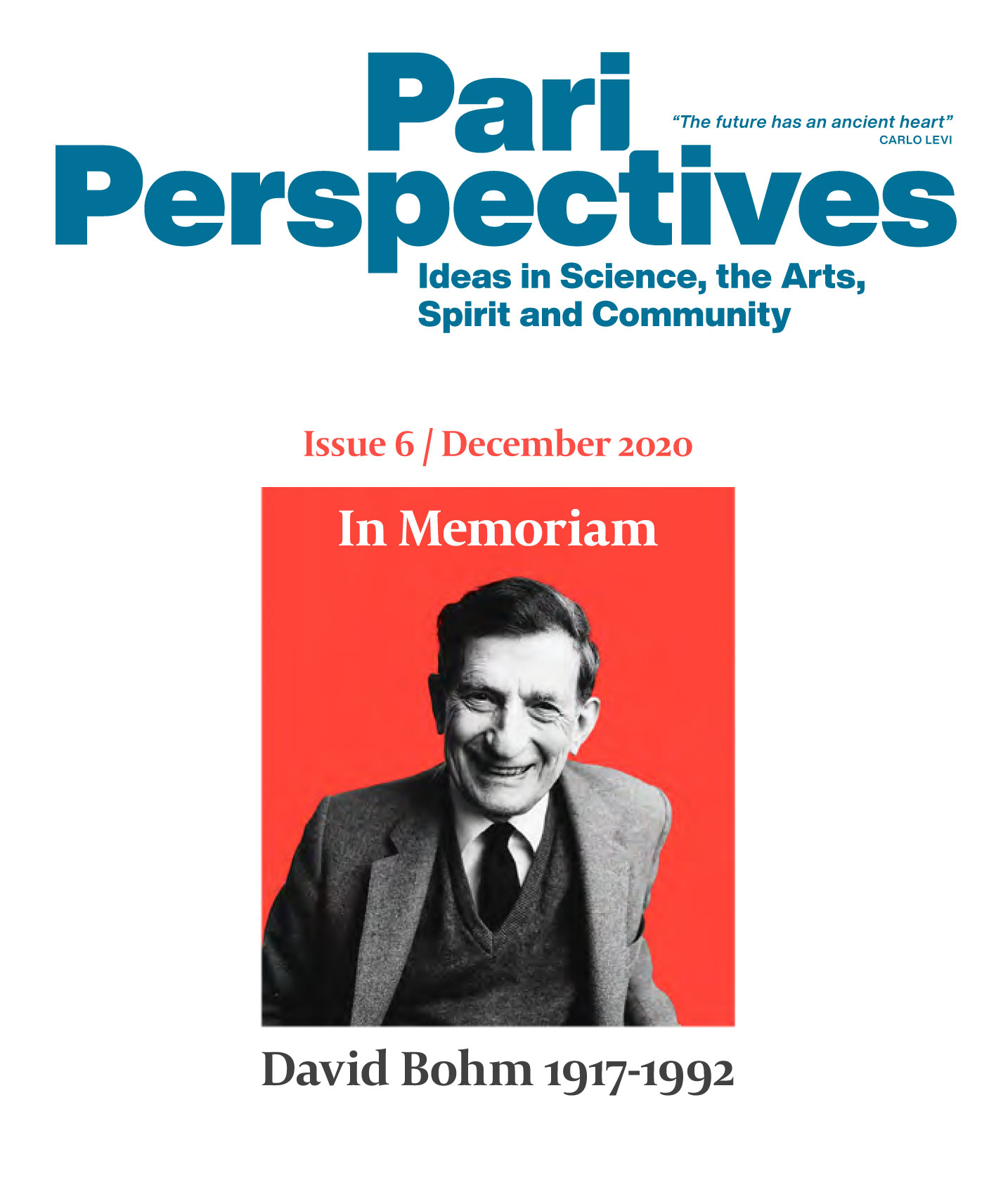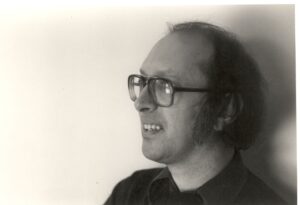Your cart is currently empty!
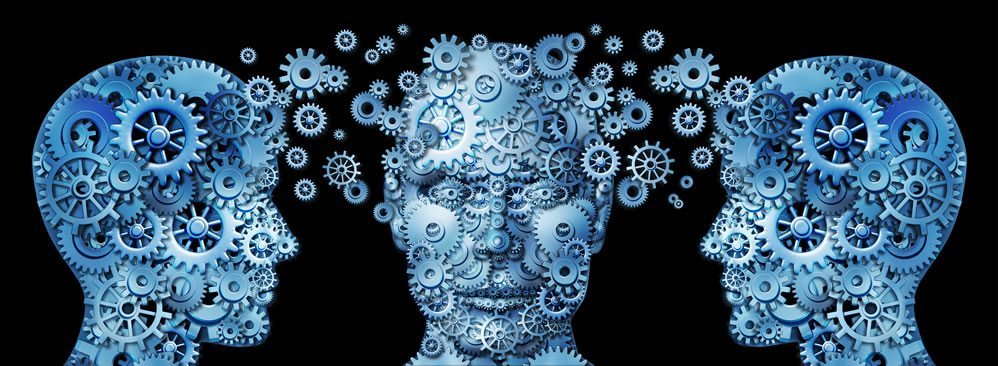
Bucking the Tide of Modern Physics
the December 2020 issue of Pari Perspectives.
Interview conducted by John Briggs and F. David Peat with David Bohm for the January 1987 issue of Omni magazine
In 1950 David Bohm wrote what many physicists consider to be a model textbook on quantum mechanics. Ironically, he has never accepted that theory of physics. In the history of science he is a maverick, a member of that small group of physicists—including Albert Einstein, Eugene Wigner, Erwin Schrödinger, Alfred Lande, Paul Dirac, and John Wheeler—who have expressed grave doubts that a theory founded on indeterminism and chance could give us a true view of the universe around us.
Today’s generation of physicists, impressed by the stunning successes of quantum physics—from nuclear weapons to lasers—are of a different mind. They are busy applying quantum mechanics to areas its original creators never imagined. Stephen Hawking, for example, used it to describe the creation of elementary particles from black holes and to argue that the universe exploded into being in a quantum-mechanical event.
Bucking this tide of modern physics for more than 30 years, Bohm has been more than a gadfly. His objections to the foundations of quantum mechanics have gradually coalesced into an extension of the theory so sweeping that it amounts to a new view of reality. Believing that the nature of things is not reducible to fragments or particles, he argues for a holistic view of the universe. He demands that we learn to regard matter and life as a whole, coherent domain, which he calls the implicate order.
Most other physicists discard Bohm’s logic without bothering to scrutinize it. Part of the difficulty is that his implicate order is rife with paradox. Another problem is the sheer range of his ideas. which encompass such hitherto nonphysical subjects as consciousness, society, truth, language, and the process of scientific theory making itself.
Briggs/Peat: Can you recall when you first experienced the sense of the wholeness that you now express as the implicate order?
Bohm: When I was a boy a certain prayer we said every day in Hebrew contained the words to love God with all your heart, all your soul, and all your mind. My understanding of these words, that is, this notion of wholeness—not necessarily directed toward God but as a way of living—had a tremendous impact on me. I also felt a sense of nature being whole very early. I felt internally related to trees, mountains, and stars in way I wasn’t to all the chaos of the cities.
When I first studied quantum mechanics, I felt again that sense of internal relationship—that it was describing something that I was experiencing directly rather than just thinking about.
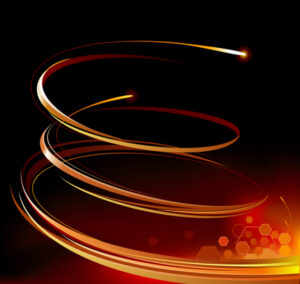
The notion of spin particularly fascinated me: the idea that when something is spinning in a certain direction, it could also spin in the other direction but that somehow the two directions together would be a spin in a third direction. I felt that somehow that described experience with the processes of the mind. In thinking about spin I felt I was in a direct relationship to nature. In quantum mechanics I came closer to my intuitive sense of nature.
B/P: Yet you’ve said that quantum mechanics doesn’t provide a clear picture of nature. What do you mean?
Bohm: The main problem is that quantum mechanics gives only the probability of an experimental result. Neither the decay of an atomic nucleus nor the fact that it decays at one moment and not another can be properly pictured within the theory. It can only enable you to predict statistically the results of various experiments.
Physics has changed from its earlier form, when it tried to explain things and give some physical picture. Now the essence is regarded as mathematical. It’s felt the truth is in the formulas. Now they may find an algorithm by which they hope to explain a wider range of experimental results, but it will still have inconsistencies. They hope that they can eventually explain all the results that could be gotten, but that is only a hope.
B/P: How did the founders of quantum mechanics initially receive your book Quantum Theory?
Bohm: In the Fifties, when I sent it around to various physicists—including Niels Bohr, Einstein, and Wolfgang Pauli—Bohr didn’t answer, but Pauli liked it. Einstein sent me a message that he’d like to talk with me. When we met he said the book had done about as well as you could do with quantum mechanics. But he was still not convinced it was a satisfactory theory.
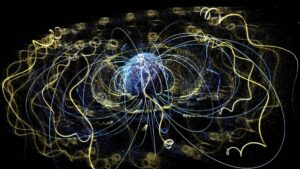
His objection was not merely that it was statistical. He felt it was a kind of abstraction; quantum mechanics got correct results but left out much that would have made it intelligible. I came up with the causal interpretation—that the electron is a particle, but it also has a field around it. The particle is never separated from that field, and the field affects the movement of the particle in certain ways. Einstein didn’t like it, though, because the interpretation had this notion of action at a distance: Things that are far away from each other profoundly affect each other. He believed only in local action.
I didn’t come back to this implicate order until the Sixties, when I got interested in notions of order. I realized then the problem is that coordinates are still the basic order in physics, whereas everything else has changed.
B/P: Your key concept is something you call enfoldment. Could you explain it?
Bohm: Everybody has seen an image of enfoldment: You fold up a sheet of paper, turn it into a small packet, make cuts in it, and then unfold it into a pattern. The parts that were close in the cuts unfold to be far away. This is like what happens in a hologram. Enfoldment is really very common in our experience. All the light in this room comes in so that the entire room is in effect folded into each part. If your eye looks, the light will be then unfolded by your eye and brain. As you look through a telescope or a camera, the whole universe of space and time is enfolded into each part, and that is unfolded to the eye. With an old-fashioned television set that’s not adjusted properly, the image enfolds into the screen and then can be unfolded by adjustment.
B/P: You spoke of coordinates and order a moment ago. How do they tie in with enfoldment? Do you mean coordinates like those on a grid?
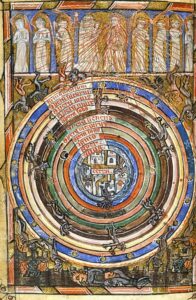
Bohm: Yes, but not necessarily straight lines. They are a way of mapping space and time. Since space-time may be curved, the lines may be curved as well. It became clear that each general notion of the world contains within it a specific idea of order. The ancient Greeks had the idea of an increasing perfection from the Earth to the heavens. Modern physics contains the idea of successive positions of bodies of matter and the constraints of forces that act on these bodies. The order of perfection investigated by the ancient Greeks is now considered irrelevant.
The most radical change in the notion of order since Isaac Newton came with quantum mechanics. The quantum-mechanical idea of order contradicts coordinate order because Heisenberg’s uncertainty principle made a detailed ordering of space and time impossible. When you apply quantum theory to general relativity, at very short distances like ten to the minus thirty-three centimetres, the notion of the order of space and time breaks down.
B/P: Can you replace that with some other sense of order?
Bohm: First you have to ask what we mean by order. Everybody has some tacit notion of it, but order itself is impossible to define. Yet it can be illustrated. In a photograph any part of an object is imaged into a point. This point-to-point correspondence emphasizes the notion of point as fundamental in sense of order. Cameras now photograph things too big or too small, too fast or too slow to be seen by the naked eye. This has reinforced our belief that everything can ultimately be seen that way.
B/P: Aren’t the contradictions you have been talking about embedded in the very name quantum mechanics’?
Bohm: Yes. Physics is more like quantum organism than quantum mechanics. I think physicists have a tremendous reluctance to admit this. There is a long history of belief in quantum mechanics, and people have faith in it. And they don’t like having this faith challenged.
B/P: So our image is the lens, the apparatus suggesting the point. The point in turn suggests electrons and particles.Bohm: And the track of particles on the photograph. Now what instrument would illustrate wholeness? Perhaps the holograph. Waves from the whole object come into each part of the hologram. This makes the hologram a kind of knowledge of the whole object. If you examine it with a narrow beam of laser light, it’s as if you were looking through a window the size of that laser beam. If you expand the beam, it’s as though you are looking through a broader window that sees the object more precisely and from more angles. But you are always getting information about the whole object, no matter how much or little of it you take.
But let’s put aside the hologram because that’s only a static record. Returning to the actual situation, we have a constant dynamic pattern of waves coming off an object and interfering with the original wave. Within that pattern of movement, many objects are enfolded in each region of space and time.
Classical physics says that reality is actually little particles that separate the world into its independent elements. Now I’m proposing the reverse, that the fundamental reality is the enfoldment and unfoldment, and these particles are abstractions from that. We could picture the electron not as a particle that exists continuously but as something coming in and going out and then coming in again. If these various condensations are close together, they approximate a track. The electron itself can never be separated from the whole of space, which is its ground.
About the time I was looking into these questions, a BBC science program showed a device that illustrates these things very well. It consists of two concentric glass cylinders. Between them is a viscous fluid, such as glycerin. If a drop of insoluble ink is placed in the glycerin and the outer cylinder is turned slowly, the drop of dye will be drawn out into a thread. Eventually the thread gets so diffused if cannot be seen. At that moment there seems to be no order at all. Yet if you slowly turn the cylinder backward the glycerin draws back into its original form and suddenly the ink drop is visible again. The ink had been enfolded into the glycerin and it was unfolded again by the reverse turning.
B/P: Suppose you put a drop of dye in the cylinder and turn it a few times and then put another drop in the same place and turn it. When you turn the cylinder back wouldn’t you get a kind of oscillation?
Bohm: Yes, you would get a movement in and out. We could put in one drop of dye and turn it and then put in another drop of dye at a slightly different place, and so on. The first and second droplets are folded a different number of times. If we keep this up and then turn the cylinder backward, the drops continually appear and disappear. So it would look as if a particle were crossing the space but in fact it’s always the whole system that’s involved.
We can discuss the movement of all matter in terms of this folding and unfolding, which I call the holomovement.
B/P: What do you think is the order of the holomovement?
Bohm: It may lie outside of time as we ordinarily know it. If the universe began with the Big Bang and there are black holes, then we must eventually reach places where the notion of time and space breaks down. Anything could happen. As various cosmologists have put it, if a black hole came out with a sign flashing Coca Cola, it shouldn’t be surprising. Within the singularity none of the laws as we know them apply. There are no particles; they are all disintegrated. There is no space and no time. Whatever is, is beyond any concept we have at present. The present physics implies that the total conceptual basis of physics must be regarded as completely inadequate. The grand unification [of the four forces of the universe] could be nothing but an abstraction in the face of some further unknown.

I propose something like this: Imagine an infinite sea of energy filling empty space, with waves moving around in there, occasionally coming together and producing an intense pulse. Let’s say one particular pulse comes together and expands, creating our universe of space-time and matter. But there could well be other such pulses. To us, that pulse looks like a big bang; in a greater context, it’s a little ripple. Everything emerges by unfoldment from the holomovement, then enfolds back into the implicate order. I call the enfolding process ‘implicating,’ and the unfolding ‘explicating.’ The implicate and explicate together are a flowing, undivided wholeness. Every part of the universe is related to every other part but in different degrees.
There are two experiences: One is movement in relation to other things; the other is the sense of flow. The movement of meaning is the sense of flow. But even in moving through space, there is a movement of meaning. In a moving picture, with twenly-four frames per second, one frame follows another, moving from the eye through the optic nerve, into the brain. The experience of several frames together gives you the sense of flow. This is a direct experience of the implicate order.
In classical mechanics, movement or velocity is defined as the relation between the position now and the position a short time ago. What was a short time ago is gone, so you relate what is to what is not. This isn’t a logical concept. In the implicate order you are relating different frames that are co–present in consciousness. You’re relating what is to what is. A moment contains flow or movement. The moment may be long or short, as measured in time. In consciousness a moment is around a tenth of a second. Electronic moments are much shorter, but a moment of history might be a century
B/P: So a moment enfolds all the past?
Bohm: Yes, but the recent past is enfolded more strongly. At any given moment we feel the presence of all the past and also the anticipated future. It’s all present and active. I could use the example of the cylinder again. Let’s say we enfold one droplet N times. Then we put another droplet in and enfold it N times. The relationship between the droplets remains the same no matter how thoroughly they are enfolded. So as you unfold you will get back the original relationship. Imagine if we take four or five droplets—all highly enfolded—the relationship between them is still there in a very subtleway, even though it is not in space and not in time. But, of course, it can be transformed into space and time by turning the cylinder. The best metaphor might involve memory. We remember a great many events, which are all present together. Their succession is in that momentary memory: We don’t have to run through all to reproduce the time succession. We already have the time succession.
B/P: And a sense of movement—so you have replaced time with movement?
Bohm: Yes, in the sense of movement of the symphony, rather than the movement of the orchestra on a bus, say, through physical space.
B/P: What do you think that says about consciousness?
Bohm: Much of our experience suggests that the implicate order is natural for understanding consciousness. When you are talking to somebody, your whole intention to speak enfolds a large number of words. You don’t choose them one by one. There are any number of examples of the implicate order in our experience of consciousness. Any one word has behind it a whole range of meaning enfolded in thought.
Consciousness is unfolded in each individual. Clearly, it’s shared between people as they look at one object and verify that it’s the same. So any high level of consciousness is a social process. There may be some level of sensorimotor perception that is purely individual, but any abstract level depends on language, which is social. The word, which is outside, evokes the meaning, which is inside each person.
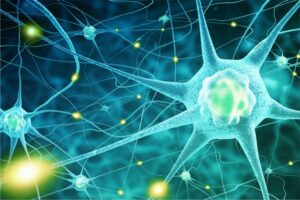
Meaning is the bridge between consciousness and matter. Any given array of matter has for any particular mind a significance. The other side of this is the relationship in which meaning is immediately effective in matter. Suppose you see a shadow on a dark night. If it means ‘assailant,’ your adrenaline flows, your heart beats faster, blood pressure rises, and muscles tense. The body and all your thoughts are affected; everything about you has changed. If you see that it’s only a shadow, there’s an abrupt change again.
That is an example of the implicate order: Meaning enfolds the whole world into me, and vice versa—that enfolded meaning is unfolded as action, through my body and then through the world. The word hormone means ‘messenger,’ that is, a substance carrying some meaning. Neurotransmitters carry meaning, and that meaning profoundly affects the immune system. This understanding could be the beginning of a different attitude to mind and to life.
B/P: Descartes held mind and external reality together with God. You’re holding the two with meaning.
Bohm: I say, ‘meaning is being.’ So any transformation of society must result in a profound change of meaning. Any change of meaning for the individual would change the whole because all individuals are so similar that it can be communicated.
B/P: What do you think might convince the next generation of physicists who seem very skeptical that the implicate order is worth investigating?
Bohm: The most convincing thing would be to develop the theory mathematically and make some predictions. A few years ago, The New York Times noted that some physicists were critical of grand unification theory saying that not much had been achieved. Defenders of grand unification theory said that it would take about twenty years to see results.
It seems that people are ready to wait twenty years for results if you’ve got formulas. If there are no formulas, they don’t want to consider it. Formulas are means of talking utter nonsense until you understand what they mean. Every page of formulas usually contain six or seven arbitrary assumptions that take weeks of hard study to penetrate.
Younger physicists usually appreciate the implicate order because it makes quantum mechanics easier to grasp. By the time they’re through graduate school they’ve become dubious about it because they’ve heard that hidden variables are of no use because they’ve been refuted. Of course, nobody has really refuted them.

At this point, I think that the major issue is mathematics. In supersymmetry theory an interesting piece of mathematics will attract attention, even without any experimental confirmation.
B/P: If scientists could accept your theory, would it change the meaning of nature for them? Would it change the meaning of science in general?
Bohm: We have become a scientific society. This society has produced all sorts of discoveries and technology, but if it leads to destruction, either through war or through devastation of natural resources, then it will have been the least successful society that ever existed. We are now in danger of that.
Where we are going depends on the programmes of our four thousand, five hundred million people all somewhat different, most of them opposed to one another. Every moment these programmes are changing in detail. Who can say where they are going to lead us? All we can do is start a movement among those people who are interested in changing the meaning.
B/P: You have suggested it may be possible to develop group minds. Could they serve as a possible avenue for this change of meaning?
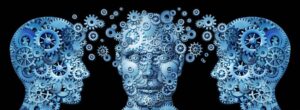
Bohm: They could if we don’t establish these absolute boundaries between minds, then I think it’s possible they could in some way unite as one mind. If there were a genuine understanding of and feeling for wholeness in this group mind, it might be enough to change things—though as the external circumstances gain momentum it becomes harder. This is important especially if there is a catastrophe so that the notion of group minds might remain in the consciousness of survivors.
B/P: All that seems to imply a radical change in the concept of being human.
Bohm: Yes. The notion of permanent identity would go by the wayside. This would be terrifying at first. The present mind, identified as it is with the personality, would react to protect the sense of personal ‘self’ against that terror.
B/P: That seems to fit in well with your thoughts about death.
Bohm: Death must be connected with questions of time and identity. When you die, everything on which your identity depends is going. All things in your memory will go. Your whole definition of what you are will go. The whole sense of being separate from anything will go because that’s part of your identity. Your whole sense of time must go.
Is there anything that will exist beyond death? That is the question everybody has always asked. It doesn’t make sense to say something goes on in time. Rather I would say everything sinks into the implicate order where there is no time. But suppose we might say right now when I’m alive the same thing is happening. The implicate order is unfolding to be me again and again each moment. And the past me is gone.
B/P: The past, then, has been snatched back into the implicate order?
Bohm: That’s right. Anything I know about ‘me’ is in the past. The present ‘me’ is the unknown. We say there is only one implicate order, only one present. But it projects itself as a whole series of moments. Ultimately, all moments are really one, Therefore now is eternity.
In one sense, everything, including me, is dying every moment into eternity and being born again, so all that will happen at death is that from a certain moment certain features will not be born again. But our whole thought process causes us to confront this with great fear in an attempt to preserve identity. One of my interests at this stage of life is looking at that fear.

